Tavistock Centre
120 Belsize Lane, Swiss Cottage, NW3 5BA
Medical
dates:
Medical
character:
Mental (Out-Patients only)
During WW1 (1914-1918) the neurologist Dr Hugh Crichton-Miller,
greatly influenced by the new psychology emerging from Vienna and
Zurich, pioneered psychotherapeutic methods of treating soldiers
suffering from shell-shock and neurosis.
After the war Dr Crichton-Miller was convinced of a need to provide similar therapies to civilians of limited financial means.
In 1919 he organised a meeting of supporters to create the Tavistock Institute of Medical Psychology. Each would donate £300 a year for three years, the project being conceived as a temporary measure, as it was hoped that the model would soon be copied elsewhere.
After some difficulty in finding a willing landlord, the Tavistock Square Clinic for Functional Nervous Disorders opened in 1920, at No. 51 Tavistock Square, with Dr Crichton-Miller as its Honorary Medical Director (Field Marshal Earl Haig and Admiral Earl Beatty later became Honorary Vice-Presidents). The first patient, a child, was seen on 27th September 1920.
The Clinic was furnished with items donated by the (mostly) volunteer staff and their friends and families. There were no beds as only out-patients were seen. Unlike other mental health establishments, there was no medical equipment and the medical staff did not wear white coats. It was intended that the patients' experience should be as 'de-medicalised' as possible.
The Clinic established a reputation as a psychotherapy centre for neurotic and traumatised children and adults. Referrals were received from other institutions and a waiting list quickly developed. It soon became popularly known as 'The Tavi'.
The Clinic was incorporated on 5th August 1929. Paid administrative staff were appointed and modest means-test fees were introduced for the patients.
A second building was acquired to provide accommodation for up to 14 patients who needed to attend regularly, but who lived too far away to do so. An appeal was launched to raise funds for larger premises and also to endow the Tavistock Institute of Medical Psychology.
By 1931 the waiting list had grown so long that it had to be closed. Only the most urgent cases were prioritized.
In 1931 the Extension Fund, unable to afford to purchase land and to build new premises, acquired the lease of a former stables used as the packing department by Messrs Shoolbreds. Its frontage was along Torrington Place. The building was redecorated in a combination of dark green and sunny yellow. It opened to patients on 9th December, 1932. The Children's Department on the ground floor had, in addition to four consulting rooms and two offices for social workers, a large, airy playroom fitted with pictures and toys. The ground floor also contained two refectories - one for staff and one for adult patients - with a kitchen in between. The remaining ground floor space was occupied by an L-shaped Lecture Theatre with 200 seats. The upper floor contained 11 consulting rooms, offices for the Director and other senior staff, and a laboratory, fully equipped for routine work. The furniture was mostly of bare oak, the lighting and equipment in modern style, and the building was centrally heated. The main waiting room was furnished with easy chairs and a thick carpet.
In 1933 Dr Crichton-Miller was succeeded by Dr John Rawlings Rees as Medical Director. The Children's Department was renamed the Children and Parents Department, in view of the policy of treating the parents as well as the child - an innovation at the time.
In 1935 a neurologist was appointed to the staff to examine each patient prior to them being accepted for psychotherapy (this practice continued until 1940).
In 1936 the Clinic was renamed the Tavistock Clinic. The name had originally been suggested in 1920, but the Post Office declared that this would be too confusing.
In 1937 the residential hostel closed as the Clinic had so many patients from outside London that it was unable to accommodate them all.
At the outbreak of WW2 in 1939, the Clinic was evacuated to the Halls of Residence at Westfield Women's College. The medical records and some furniture were moved there too, but most administrative records and furniture went into storage (and were destroyed by wartime bombing).
Although many of the professional staff joined the armed forces, serving as psychiatric specialists, civilian patients continued to be seen throughout the war. Centres for neuroses were also established, including one at the Stanboroughs Sanitarium, with Dr Crichton-Miller as Medical Director.
During the war, the premises on the corner of Torrington Place and Malet Street were destroyed by bombs.
After the war, in August 1945, the Clinic acquired the use of a building at No. 2 Beaumont Street. A grant of £22,000 was received from the Rockefeller Foundation to help develop work in social and preventative psychiatry; a new division - the Tavistock Institute of Human Relations - was created for this.
In 1948 the Clinic joined the NHS under the control of the North West Metropolitan Regional Hospital Board. However, the Institute, while remaining part of the umbrella organisation, was legally separated from the Clinic and became a charitable company.
During the 1950s a new service - family therapy - was pioneered by the Clinic, focussing on the interaction between children, adolescents and their parents.
In 1956 the Clinic came under the control of the Paddington Group Hospital Management Committee, which already governed the Child Guidance Training Centre and the Portman Clinic.
In 1959 the Adolescent Unit was established. It was accommodated in rented premises in Hallam Street.
In 1965 the foundation stone was laid by Dr Rees for a purpose-built building at the corner of Belsize Lane and Fitzjohn's Avenue.
The new 5-storey building, named the Tavistock Centre, was officially opened in May 1967 by Princess Marina. As well as the Clinic, it accommodated the Adolescent Unit from Hallam Street, the Young People's Consultation Centre from Kings College Road, and the Tavistock Institute of Human Relations. The Child Guidance Training Centre was also housed in the same building; it later merged with the Tavistock Clinic's Department for Children and Parents in 1985 and was renamed the Child and Family Department. The Mulberry Bush Day Unit, part of the Child Guidance Training Centre, also merged with the Department, later becoming the Tavistock Children's Day Unit, a special school.
In 1974, following a major reorganisation of the NHS, the Centre came under the control of the Hampstead District Health Authority, part of the North East Thames Regional Health Authority.
In 1994, with the introduction of the 'marketplace' system of providers and purchasers within the NHS, the Centre became an independent NHS Trust, merging with the Portman Clinic to form the Tavistock and Portman NHS Trust. In the same year the Tavistock Institute of Human Relations moved to new premises in Tabernacle Street, Shoreditch. However, the Family Discussion Bureau, part of the Institute, remained at the Centre and was renamed the Tavistock Centre for Couple Relationships; it is fee-based rather than part of the NHS. (In 2009 the Bureau moved to new premises in Warren Street, becoming Tavistock Relationships.)
On 22nd June 2001 Princess Alexandra officially opened the Centre for Mental Health in Nursing, established in collaboration with the Middlesex University. It provides a range of training programmes for nurses, based on the Tavistock approach.
In 2006 the Trust became a Foundation NHS Trust.
After the war Dr Crichton-Miller was convinced of a need to provide similar therapies to civilians of limited financial means.
In 1919 he organised a meeting of supporters to create the Tavistock Institute of Medical Psychology. Each would donate £300 a year for three years, the project being conceived as a temporary measure, as it was hoped that the model would soon be copied elsewhere.
After some difficulty in finding a willing landlord, the Tavistock Square Clinic for Functional Nervous Disorders opened in 1920, at No. 51 Tavistock Square, with Dr Crichton-Miller as its Honorary Medical Director (Field Marshal Earl Haig and Admiral Earl Beatty later became Honorary Vice-Presidents). The first patient, a child, was seen on 27th September 1920.
The Clinic was furnished with items donated by the (mostly) volunteer staff and their friends and families. There were no beds as only out-patients were seen. Unlike other mental health establishments, there was no medical equipment and the medical staff did not wear white coats. It was intended that the patients' experience should be as 'de-medicalised' as possible.
The Clinic established a reputation as a psychotherapy centre for neurotic and traumatised children and adults. Referrals were received from other institutions and a waiting list quickly developed. It soon became popularly known as 'The Tavi'.
The Clinic was incorporated on 5th August 1929. Paid administrative staff were appointed and modest means-test fees were introduced for the patients.
A second building was acquired to provide accommodation for up to 14 patients who needed to attend regularly, but who lived too far away to do so. An appeal was launched to raise funds for larger premises and also to endow the Tavistock Institute of Medical Psychology.
By 1931 the waiting list had grown so long that it had to be closed. Only the most urgent cases were prioritized.
In 1931 the Extension Fund, unable to afford to purchase land and to build new premises, acquired the lease of a former stables used as the packing department by Messrs Shoolbreds. Its frontage was along Torrington Place. The building was redecorated in a combination of dark green and sunny yellow. It opened to patients on 9th December, 1932. The Children's Department on the ground floor had, in addition to four consulting rooms and two offices for social workers, a large, airy playroom fitted with pictures and toys. The ground floor also contained two refectories - one for staff and one for adult patients - with a kitchen in between. The remaining ground floor space was occupied by an L-shaped Lecture Theatre with 200 seats. The upper floor contained 11 consulting rooms, offices for the Director and other senior staff, and a laboratory, fully equipped for routine work. The furniture was mostly of bare oak, the lighting and equipment in modern style, and the building was centrally heated. The main waiting room was furnished with easy chairs and a thick carpet.
In 1933 Dr Crichton-Miller was succeeded by Dr John Rawlings Rees as Medical Director. The Children's Department was renamed the Children and Parents Department, in view of the policy of treating the parents as well as the child - an innovation at the time.
In 1935 a neurologist was appointed to the staff to examine each patient prior to them being accepted for psychotherapy (this practice continued until 1940).
In 1936 the Clinic was renamed the Tavistock Clinic. The name had originally been suggested in 1920, but the Post Office declared that this would be too confusing.
In 1937 the residential hostel closed as the Clinic had so many patients from outside London that it was unable to accommodate them all.
At the outbreak of WW2 in 1939, the Clinic was evacuated to the Halls of Residence at Westfield Women's College. The medical records and some furniture were moved there too, but most administrative records and furniture went into storage (and were destroyed by wartime bombing).
Although many of the professional staff joined the armed forces, serving as psychiatric specialists, civilian patients continued to be seen throughout the war. Centres for neuroses were also established, including one at the Stanboroughs Sanitarium, with Dr Crichton-Miller as Medical Director.
During the war, the premises on the corner of Torrington Place and Malet Street were destroyed by bombs.
After the war, in August 1945, the Clinic acquired the use of a building at No. 2 Beaumont Street. A grant of £22,000 was received from the Rockefeller Foundation to help develop work in social and preventative psychiatry; a new division - the Tavistock Institute of Human Relations - was created for this.
In 1948 the Clinic joined the NHS under the control of the North West Metropolitan Regional Hospital Board. However, the Institute, while remaining part of the umbrella organisation, was legally separated from the Clinic and became a charitable company.
During the 1950s a new service - family therapy - was pioneered by the Clinic, focussing on the interaction between children, adolescents and their parents.
In 1956 the Clinic came under the control of the Paddington Group Hospital Management Committee, which already governed the Child Guidance Training Centre and the Portman Clinic.
In 1959 the Adolescent Unit was established. It was accommodated in rented premises in Hallam Street.
In 1965 the foundation stone was laid by Dr Rees for a purpose-built building at the corner of Belsize Lane and Fitzjohn's Avenue.
The new 5-storey building, named the Tavistock Centre, was officially opened in May 1967 by Princess Marina. As well as the Clinic, it accommodated the Adolescent Unit from Hallam Street, the Young People's Consultation Centre from Kings College Road, and the Tavistock Institute of Human Relations. The Child Guidance Training Centre was also housed in the same building; it later merged with the Tavistock Clinic's Department for Children and Parents in 1985 and was renamed the Child and Family Department. The Mulberry Bush Day Unit, part of the Child Guidance Training Centre, also merged with the Department, later becoming the Tavistock Children's Day Unit, a special school.
In 1974, following a major reorganisation of the NHS, the Centre came under the control of the Hampstead District Health Authority, part of the North East Thames Regional Health Authority.
In 1994, with the introduction of the 'marketplace' system of providers and purchasers within the NHS, the Centre became an independent NHS Trust, merging with the Portman Clinic to form the Tavistock and Portman NHS Trust. In the same year the Tavistock Institute of Human Relations moved to new premises in Tabernacle Street, Shoreditch. However, the Family Discussion Bureau, part of the Institute, remained at the Centre and was renamed the Tavistock Centre for Couple Relationships; it is fee-based rather than part of the NHS. (In 2009 the Bureau moved to new premises in Warren Street, becoming Tavistock Relationships.)
On 22nd June 2001 Princess Alexandra officially opened the Centre for Mental Health in Nursing, established in collaboration with the Middlesex University. It provides a range of training programmes for nurses, based on the Tavistock approach.
In 2006 the Trust became a Foundation NHS Trust.
Present status (January 2018)
The internationally renowned psychoanalytically-based psychotherapy Centre remains operational. It has three principal departments - Child and Family, Adolescent, and Adult. It also undertakes training and research.
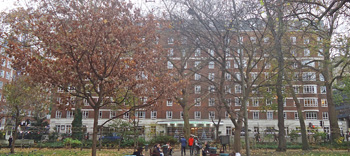
The first site of the Tavistock Clinic at No. 51 Tavistock Square is now part of the frontage of the Tavistock Hotel at Nos. 48-55 (above and below).
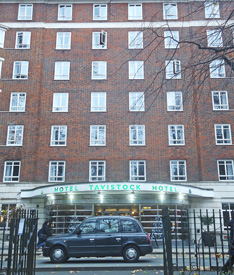
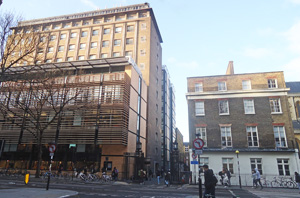
The second site at the corner of Torrington Place and Malet Place is now occupied by the UCL Engineering Front Building (above and below).

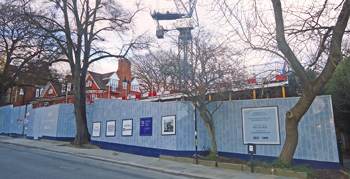
During the war the Clinic occupied Orchard Wing, built in 1935 as part of the Westfield College Halls of Residence. The Wing was located at the south of the site, at the corner of Kidderpore Avenue and Croft Way. It was later renamed Lord Cameron Wing. The building was not listed and has now been demolished. The site of the Halls of Residence is being redeveloped by Mount Anvil.
(Photograph obtained in November 2017).
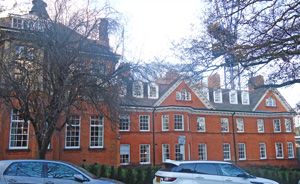
One of the survving blocks of the former Westfield College Halls of Residence.
(Photograph obtained in November 2017).
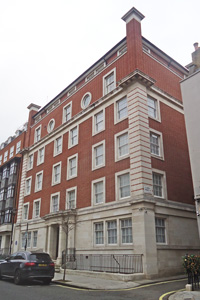
The third home of the Clinic was at No. 2 Beaumont Street, the former Duchess Nursing Home, which closed in 1939. It is now part of the King Edward VII's Hospital for Officers.
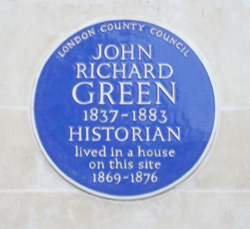
A blue plaque for John Richard Green is mounted on the front of the building; he lived at No. 4 Beaumont Street. The current building, built in the 1920s, occupies the site of Nos. 2, 3 and 4.
N.B. Photographs obtained November 2008
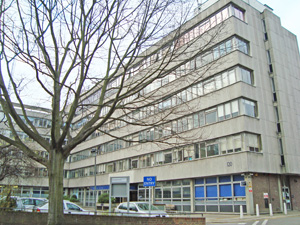
The L-shaped building on Belsize Lane, as seen from the east.

The main entrance.
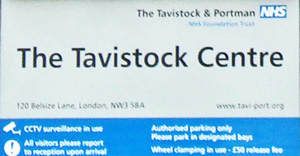
Signage for the Centre along Belsize Lane.
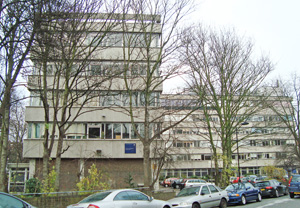
The Centre along Belsize Lane, as seen from the west.
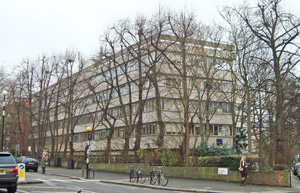
The Centre along Fitzjohn's Avenue.
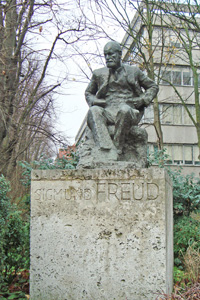
A statue of Sigmund Freud is located at the corner of Fitzjohn's Avenue and Belsize Lane (above and below).

N.B. Photographs obtained in December 2017

The Tavistock Children's Day Unit, the former Tavistock Mulberry Bush Day Unit, at No. 33 Daleham Gardens, is also known as Gloucester House (above and below).
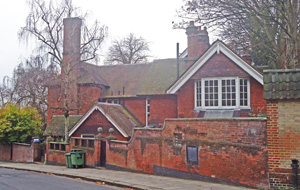
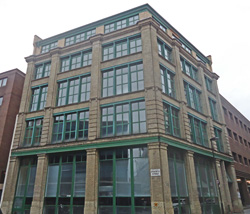
In 1994 the Tavistock Institute of Human Relationships moved to a new building on the corner of Epworth Street and Tabernacle Street.
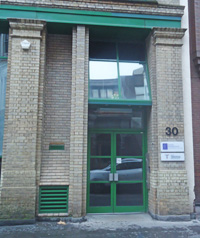
The main entrance on Tabernacle Street.
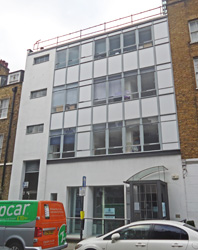
In 2009 Tavistock Relationships moved to No. 70 Warren Street.
(Author unstated) 1932 Institute of Medical Psychology. Lancet 220 (5703), 1359-1360.
Behrman S 1980 Two jubilees in psychotherapy. British Medical Journal 281 (6241), 681.
Brackenbury HB 1937 The Tavistock Clinic. British Medical Journal 1 (17th April), 833.
Bynum WF, Porter R, Shepherd M (eds)1985 The Anatomy of Madness: Essays in the Hospital or Psychiatry. Vol. II. Institutions and Societies. London, Tavistock Publications.
Chickering R, Forster S (eds) 2003 The Shadows of Total War: Europe, East Asiam and the United States, 1919-1939. Cambridge University Press.
Dicks HV 1970 Fifty Years of the Tavistock Clinic. London, Routledge & Kegan Paul.
Hogg C 1999 Patients, Power and Politics: From Patients to Citizens. London, SAGE Publications.
Jones E, Wessely S 2005 Shell Shock to PTSD: Military Psyciatry from 1900 to the Gulf War. Hove, Psychology Press.
Macphail DS 1981 Two jubilees in psychotherapy. British Medical Journal 281 (6241), 681.
Shephard B 2003 A War of Nerves: Soldiers and Psychiatrists in the Twentieth Century. Harvard University Press.
http://psychoanalysis.org.uk
https://en/wikipedia.org
https://tavistockandportman.nhs.uk
www.aim25.ac.uk
www.ucl.ac.uk
Return to home page